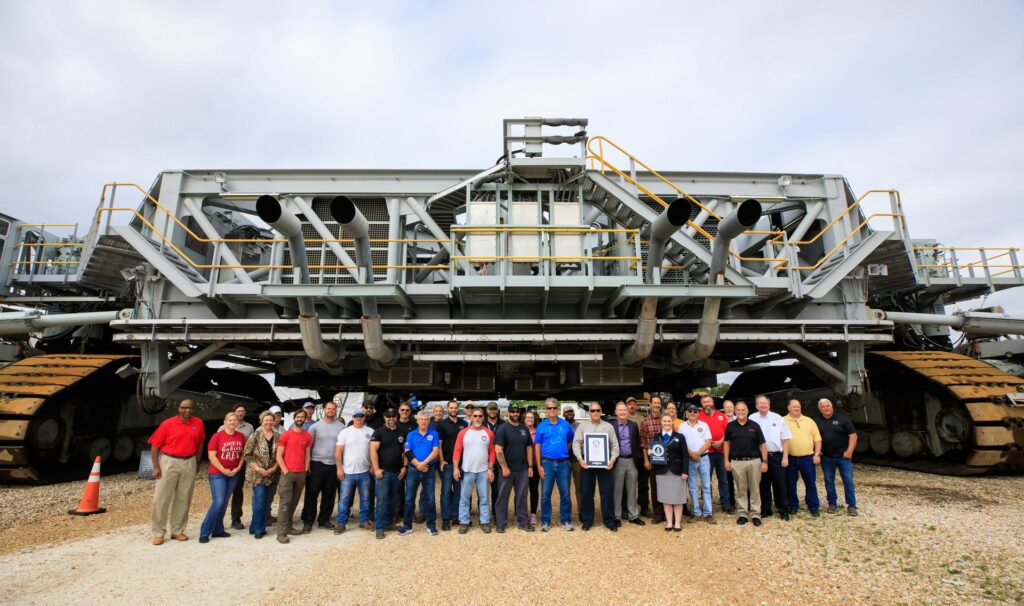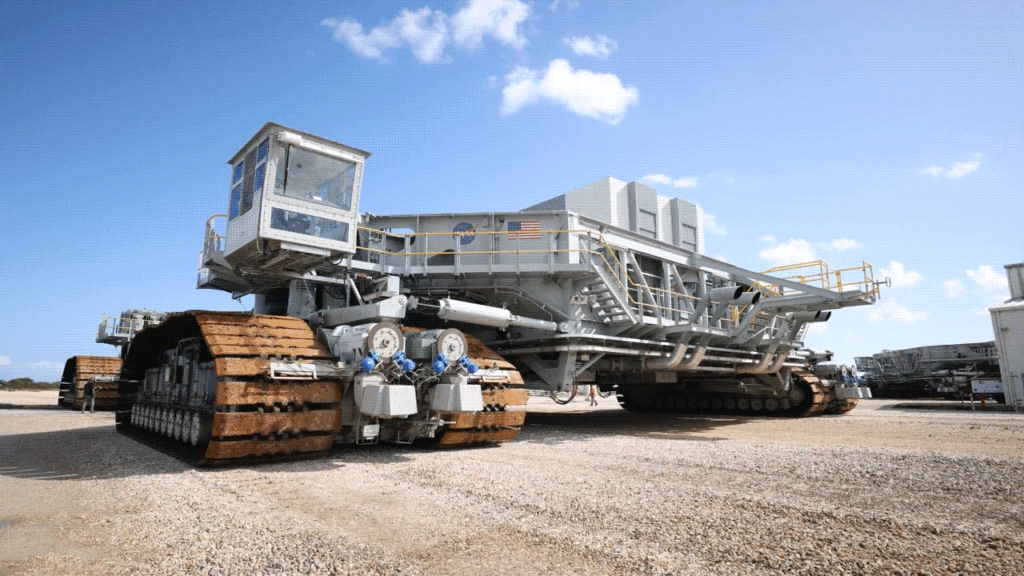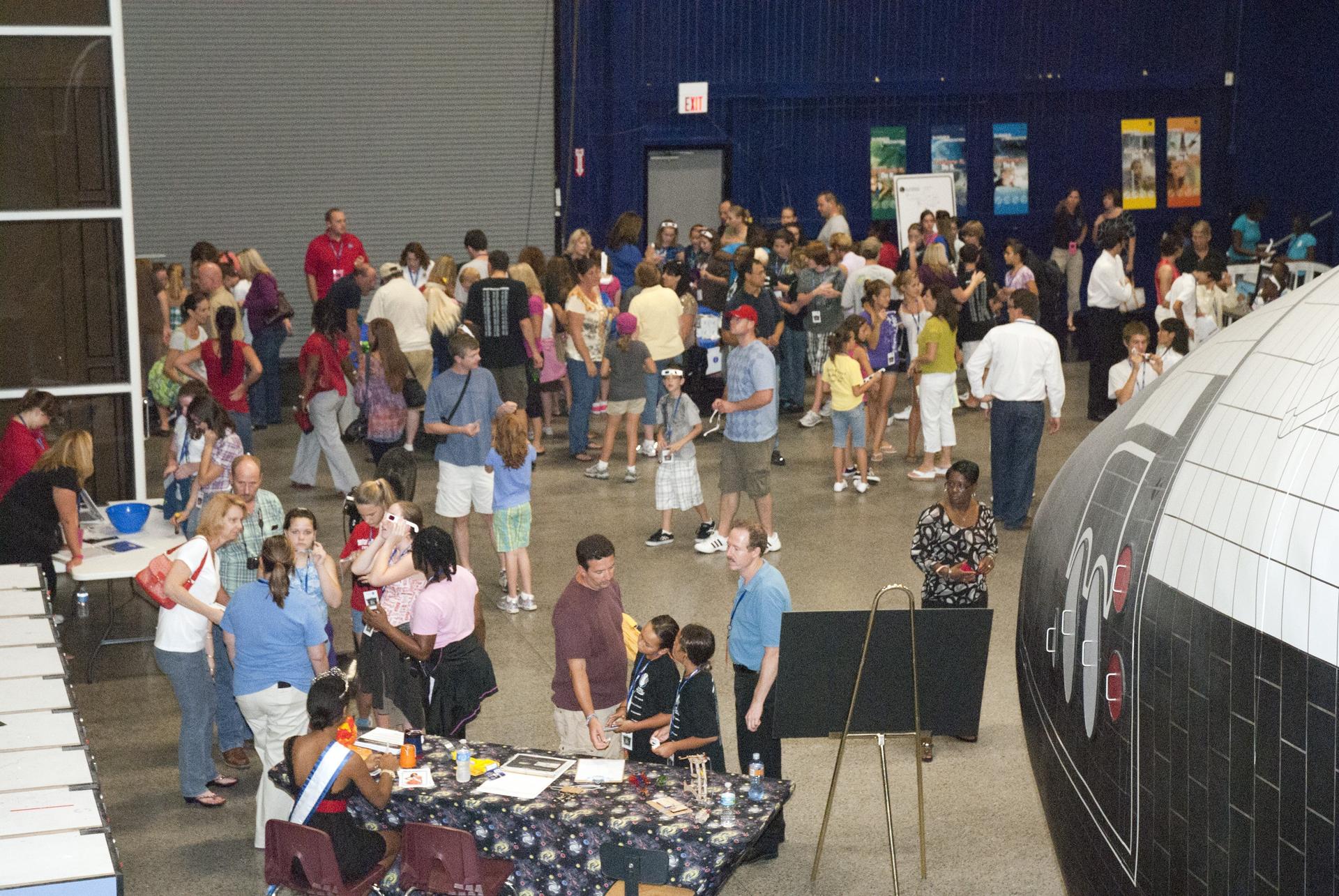
At the bustling Kennedy Space Center, home to some of NASA’s most groundbreaking projects, Eli Burton caught up with Cliff Lanham, the senior vehicle operations manager for NASA’s Exploration Ground Systems (EGS) Program. Their conversation offered a deep dive into the pivotal role of the legendary Crawler-transporters and their contribution to NASA’s ambitious Artemis missions.

The Crawler’s Crucial Role in Artemis Missions
As NASA gears up for its Artemis missions, aiming to return humans to the Moon and eventually push forward to Mars, the spotlight often falls on its astronauts and rocket scientists. However, according to Lanham, the unsung heroes like the Crawler-transporters play a crucial role behind the scenes. Originally designed during the Apollo era, these massive vehicles are pivotal in transporting the mobile launcher and various spacecraft components from assembly buildings to the launch pad.
Lanham explains, “The Crawler primarily supports EGS and Artemis missions by transporting the mobile launcher back and forth from the pad. This includes the time when we stack the vehicle and take it out to the pad for launch preparations.” The flexibility of these transporters also opens potential doors for commercial providers in the future, though as of now, the focus remains tightly on supporting NASA’s core missions.

Innovative Solutions and Maintenance Challenges
The Crawler’s design also proves instrumental in other engineering feats, such as lifting the base of the assembly for the Mobile Launcher 2 (ML2). This decision to utilize the Crawler’s robust capabilities came from its ability to handle extraordinary weights—comparable to a baseball infield in size—thus avoiding the need for multiple cranes and additional equipment.
Maintaining such a colossal machine in Florida’s humid and salty environment poses its own set of challenges. “They’re doing maintenance most of the time,” Lanham says. Routine tasks include checking for corrosion, rebuilding generators, and ensuring the engines are in top shape. This meticulous maintenance ensures the Crawler meets its operational demands without delays, crucial for keeping the tight schedules of space missions.

Educational Outreach and Future Prospects
Lanham’s passion extends beyond just managing operations; he’s also keen on inspiring the next generation of space explorers. He emphasizes the importance of STEM education and suggests reaching out to NASA’s Public Affairs Office (PAO) for students interested in contributing to future missions. “The STEM world is your ticket to being part of missions like Artemis,” he advises.
Furthermore, the advancement of technology like Zoom has enabled NASA to extend its educational outreach virtually, allowing enthusiasts from all over the globe to connect with their programs.
Artemis and Beyond
The ongoing development of Artemis missions marks a significant milestone in space exploration. Lanham reflects on the importance of the core stage’s rollout for Artemis 2, considering it a “huge milestone for the Moon to Mars enterprise.”
As NASA continues its preparations for Artemis and further explorations, the ground systems and the teams that manage them remain pivotal. Lanham’s calm demeanor and experienced leadership are essential as they navigate the challenges that come with pioneering new frontiers in space.
This interview not only highlights the critical support roles that enable NASA’s headline-making missions but also underscores the broader impacts of these missions on technology, education, and international collaboration.
For more detailed information on NASA’s Exploration Ground Systems (EGS) Program and the Artemis missions, visit NASA’s official EGS page and Artemis program page.

